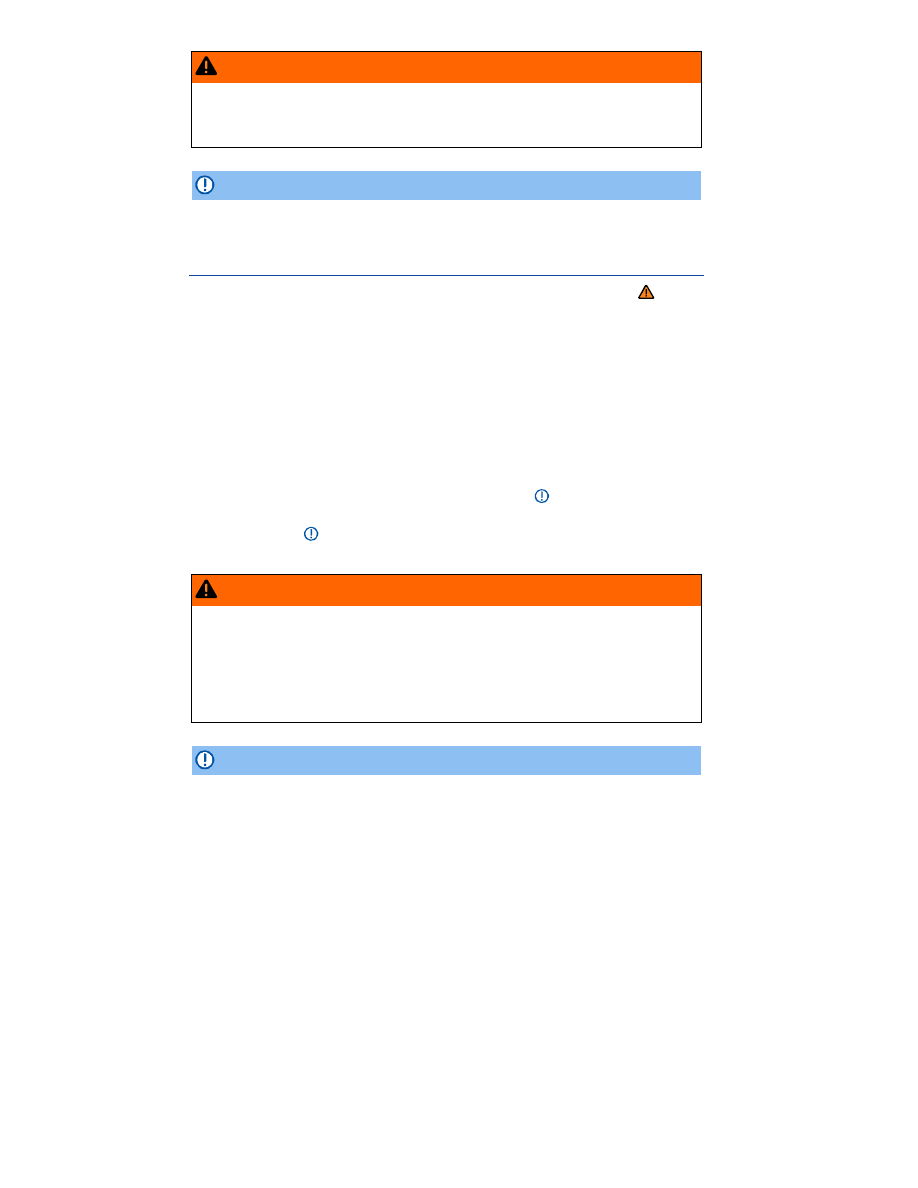Volkswagen Golf SportWagen (2015 year). Manual - part 23

WARNING
Failure to heed warning lights and instrument cluster text messages can cause the vehicle to
break down in traffic and result in a collision and serious personal injury.
Never ignore warning lights or text WARNINGS.
Always stop the vehicle as soon as it is safe to do so.
NOTICE
Failure to heed warning lights or text WARNINGS can result in vehicle damage.
Engine coolant specifications
Please first read and note the introductory information and heed the WARNINGS
The engine cooling system is filled at the factory with a mixture of specially conditioned water and at
least 40 percent of Volkswagen engine coolant additive G 13 (TL-VW 774 J). This engine coolant
additive is pink.
This mixture provides antifreeze protection down to -13 °F (-25 °C). It also helps to protect the light
alloy parts in the engine cooling system against corrosion. In addition, the mixture helps prevent
calcium deposits and increases the boiling point of the engine coolant.
To protect the engine, the mixture must always contain at least 40% coolant additive even in warm
weather or climates where antifreeze protection is not needed.
If more antifreeze protection is needed for climate conditions, the percentage of coolant additive can
be increased. However, the coolant additive percentage must never be more than 60%; otherwise,
antifreeze protection is reduced and the ability of the mixture to cool the engine is also reduced.
When adding engine coolant, use a mixture of distilled water and at least 40% coolant additive G 13
or G 12 plus-plus (TL-VW 774 G) for optimum corrosion protection
⇒ .
Do not mix G 13 with G 12 plus or G 11. Mixing these coolant additives together significantly reduces
corrosion protection
⇒ and can lead to engine damage that is not covered by any Volkswagen
Limited Warranty.
WARNING
Too little antifreeze protection in the engine cooling system can cause engine failure and
severe injuries.
Always make sure there is enough of the correct coolant additive to provide proper anti-
freeze protection at the coldest temperatures that can be expected where the vehicle will be
used.
At extremely cold temperatures, the coolant could freeze, causing the vehicle to break
down. The heater would also not work, and vehicle occupants could be without protection at
subfreezing temperatures.
NOTICE
Never mix original Volkswagen engine coolant additives with other additives not approved by
Volkswagen. Mixing Volkswagen coolant additives with coolant additives made by other manu-
facturers can seriously damage the engine and the engine cooling system.